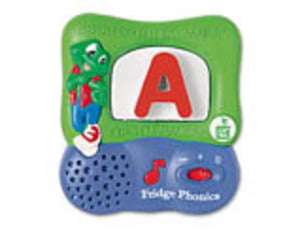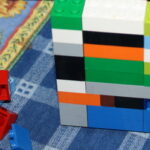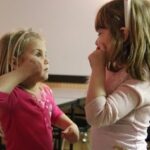Whether they are visual learners or not, all young children can successfully learn the alphabet through activities that help them see what they are learning.
Visual learners learn best through sight. While many children are dominantly visual learners, all children, despite their learning styles, learn best through a variety of learning activities that appeal to all three learning styles: kinesthetic (learns with hands on projects), auditory (learns best by speaking and listening), and visual (learns by seeing). So while incorporating these sight-based activities into your child’s day, remember to provide plenty of alphabet songs, speaking practice, and appealing alphabet manipulatives, such as alphabet blocks and alphabet puzzles as a supplement to these visual learning activities.
Share Alphabet Visuals with Your Child
Alphabet visuals come in many forms: alphabet books, posters, toys, flashcards, magnetic letters, and more.
There are literally hundreds of great alphabet books on the market for kids that pair a letter with a picture or two beginning with that letter (A is for alligator, B is for bear…). Make a practice of sharing one or two a day with your child. As you read the books, point to the letter as you say it. You can trace the letter with your finger to emphasize the shape of the letter you are talking about. Toddlers will watch at first, and eventually they will trace the letter, too. Put an alphabet poster low on the door of your child’s room so she can examine it easily. Teach a few letters at a time as you go in and out of the room.
Introduce a few new letters at a time on your refrigerator. Kids like when you start with their name or the name of a favorite toy. Write their name on the fridge with alphabet letters and point out each letter and its sound. A says “ah,” D says “duh,” A says “ah,” M says “mmm,” A-D-A-M spells Adam! When your child masters the letters of his name, add a few more letters to spell another common word, until all of the alphabet magnets are on the fridge.
When your child has mastered uppercase letters, add in the lowercase letters a few at a time and let your child pair up the letter sets. You can call them big and little letters, mommy and baby letters, etc… Don’t worry about calling them uppercase and lowercase, your child will apply the academic word to the concept easy enough in school.
Finding Letters around Town
Letters are everywhere and visual learners will enjoy recognizing letters around town as you run errands. In the grocery store, you can hand your child a box of cereal as she sits in the cart and ask her to point to the various letters in the name of the product. She’ll enjoy the treasure hunt, and you’ll enjoy getting your errands done tantrum-free.
Street signs are also a great source for letter finding activities. Point out the letters in a stop sign or a no parking sign as you walk by or are sitting at a red light. Soon you child will be examining the letters on his own as he begins decoding the world around him.
If your child is a kinesthetic (learn by doing) learner, try these activities for kinesthetic learners.





